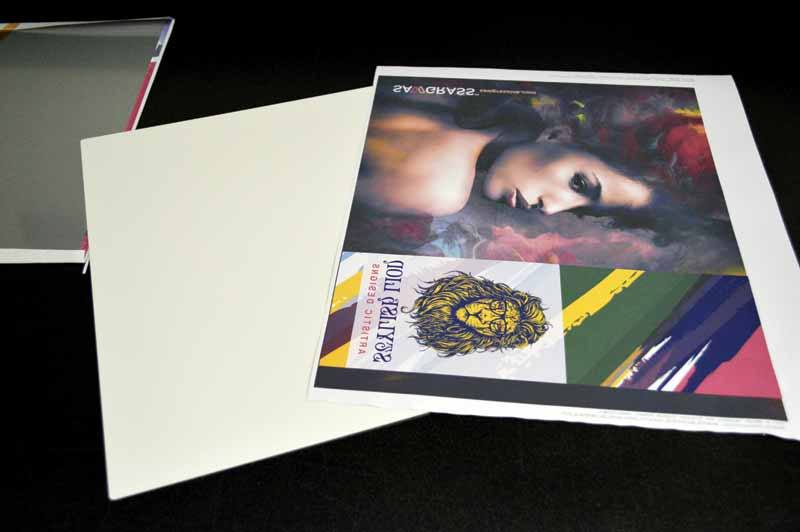Reducing downtime
Time is certainly money in the dye sublimation industry. The more products that can be created within a given amount of time, the greater the profits. The ability to reduce downtime—i.e. when the heat press is left idle—is a critically important part of optimizing productivity.
Sometimes, all it takes is a little reorganization and rearrangement of the production workspace to improve efficiency and keep the line running smoothly. First, a staging area should be stocked with heat tape, scissors, and other essential items, so as to reduce the amount of time it will take to affix transfer papers to substrates. Next, a cooling area should be designated, where transfers can be quickly removed and finished graphics allowed to properly decrease in temperature.
It is also important to set aside space for a packing area, stocked with prepared boxes and a postage meter. If signmakers spend less time on shipping, they can spend more time selling, printing, and pressing.
While the aforementioned ‘trial and error’ of experimentation and testing are always a reality with dye sublimation, there are ways to reduce waste. For one thing, pressed substrates should not be stacked until they are completely cool; otherwise, they can transfer their colours to each other. Similarly, the removal of transfer paper from a substrate should be quick and even, immediately after the substrate leaves the heat press, to prevent ‘ghosting.’
It is also important with fabrics to use a lint roller to remove any dust and stray fibres before applying the transfer paper. This will help prevent little blue speckles from showing up on the finished material.
Finally, images should always be printed about 6.4 mm (0.25 in.) larger than the size of the substrate, providing a margin of error when aligning everything.
Preventing clogged nozzles and broken printheads
The composition of the ink used in dye sublimation can have a major effect on colour accuracy, production speed, and print quality—and even on the length of the equipment’s useful life.
Sublimation inks must be formulated with a specific printer in mind. Indeed, not every inkjet printer used in the sign industry can process sublimation inks. Some of their printheads apply heat, which can cause premature gassing of the ink’s dye solids. Less expensive bulk inks can introduce air bubbles and contaminants into the printer, leading to irreparable damage to the hardware.
As such, caution should be taken when purchasing bulk inks in order to ensure the printer performs as desired and preventing breakdowns and/or damage.
Jimmy Lamb is manager of education for Sawgrass, which integrates printing hardware, software, and inks for dye sublimation product decorating. For more information, visit www.sawgrassink.com.







